A sleek, low-profile, wireless 60% mechanical keyboard with hot-swappable switches! Featuring QMK/VIA firmware support, rapid wireless functionality (2.4GHz 1000Hz), a robust build, and an enjoyable typing experience. It's an excellent board, with a couple of minor niggles.
I have a strong affinity for 60% keyboards and own several, including the Vortex Poker 3 and Ducky One 2 Mini. My poor Ducky recently gave up the ghost, so the quest for something new began! After narrowing down my options to the Keychron K7 Pro and the Nuphy Air60 v2, I did the only logical thing: bought both – one for me and one for the wife (after thorough testing, of course 😉). Ultimately, I settled on the Nuphy for my personal use.
Specifications
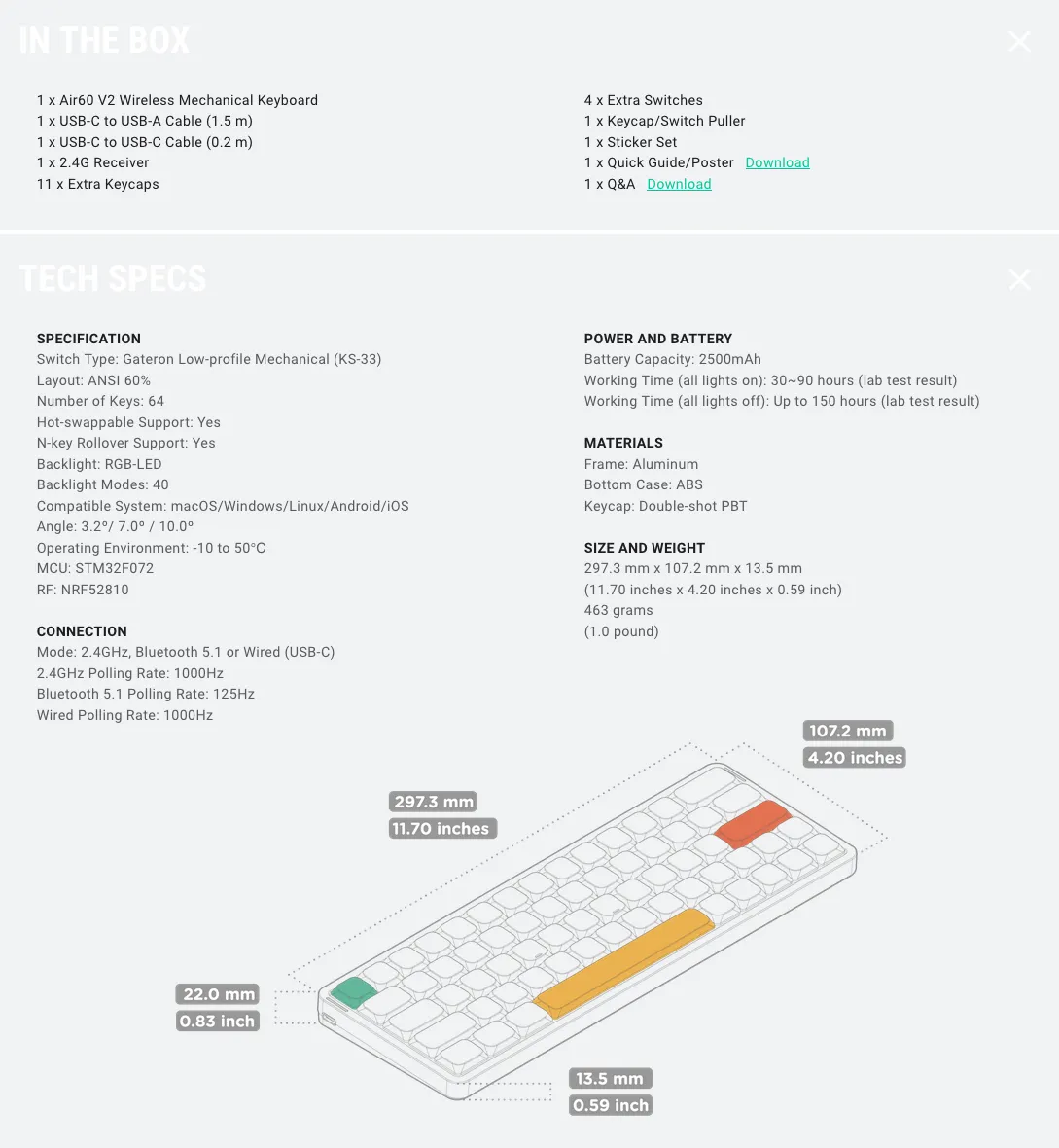
Build and Features
60% keyboards are a great space-saving option, perfect for a clean and minimal desk setup or gamers looking for more mouse room. However, the layout may not appeal to everyone. 60% keyboards often sacrifice keys to maintain a compact size, typically featuring only the essential letters, numbers, and modifiers. Dedicated arrow keys, function rows, and numpads are usually omitted. However, these missing keys are typically accessed through a secondary layer (using the Fn key).
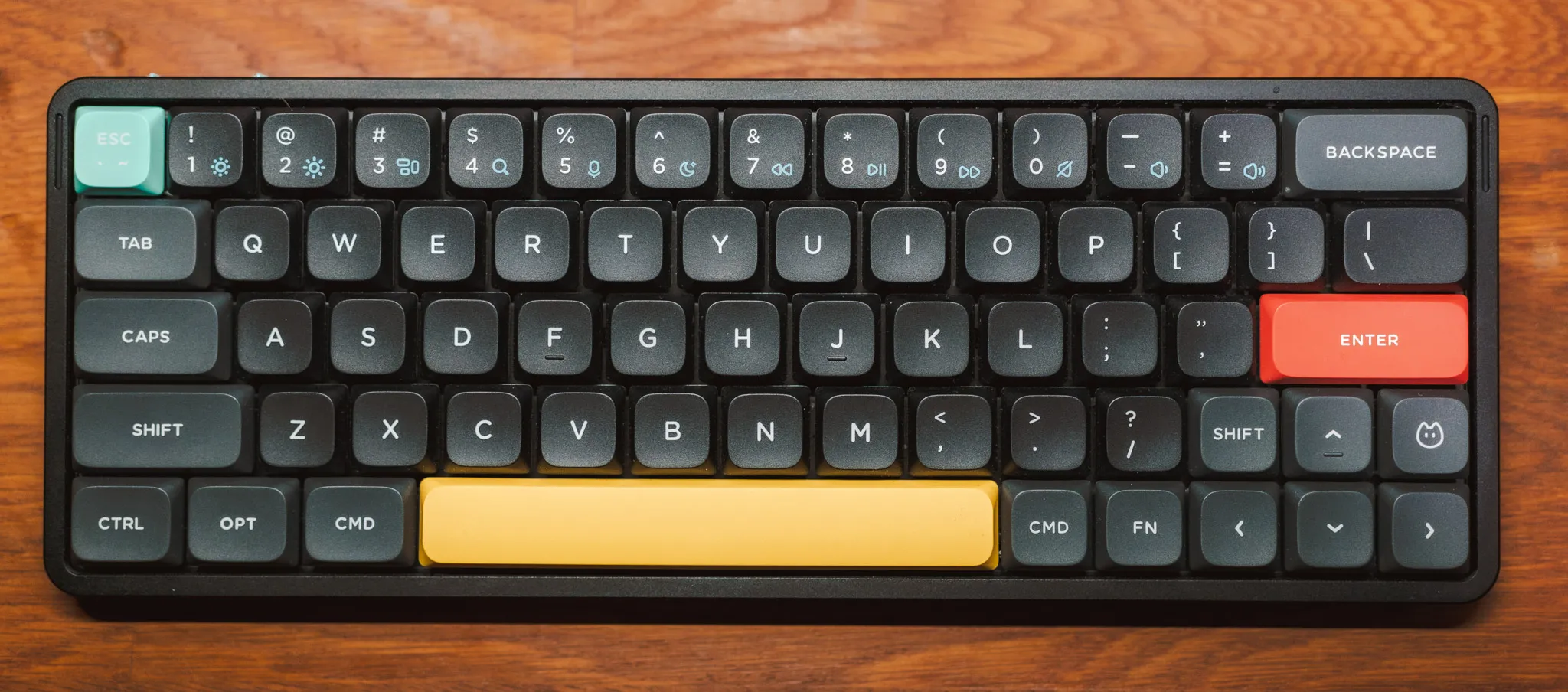
On the Air60, Nuphy managed to include arrow keys by reducing the size of the right Shift, Alt, and Fn. This decision makes the learning curve for 60% keyboards more accessible, especially for those accustomed to having arrow keys readily available.
Personally, I'm a fan of using Caps + hjkl for arrows (yes, I'm a bit of a Vim nerd 🤓). While Nuphy doesn't come with those binds by default, the QMK firmware allows you to remap every single key on the board. In my case, activating another layer with Caps provides hjkl as the arrow keys.
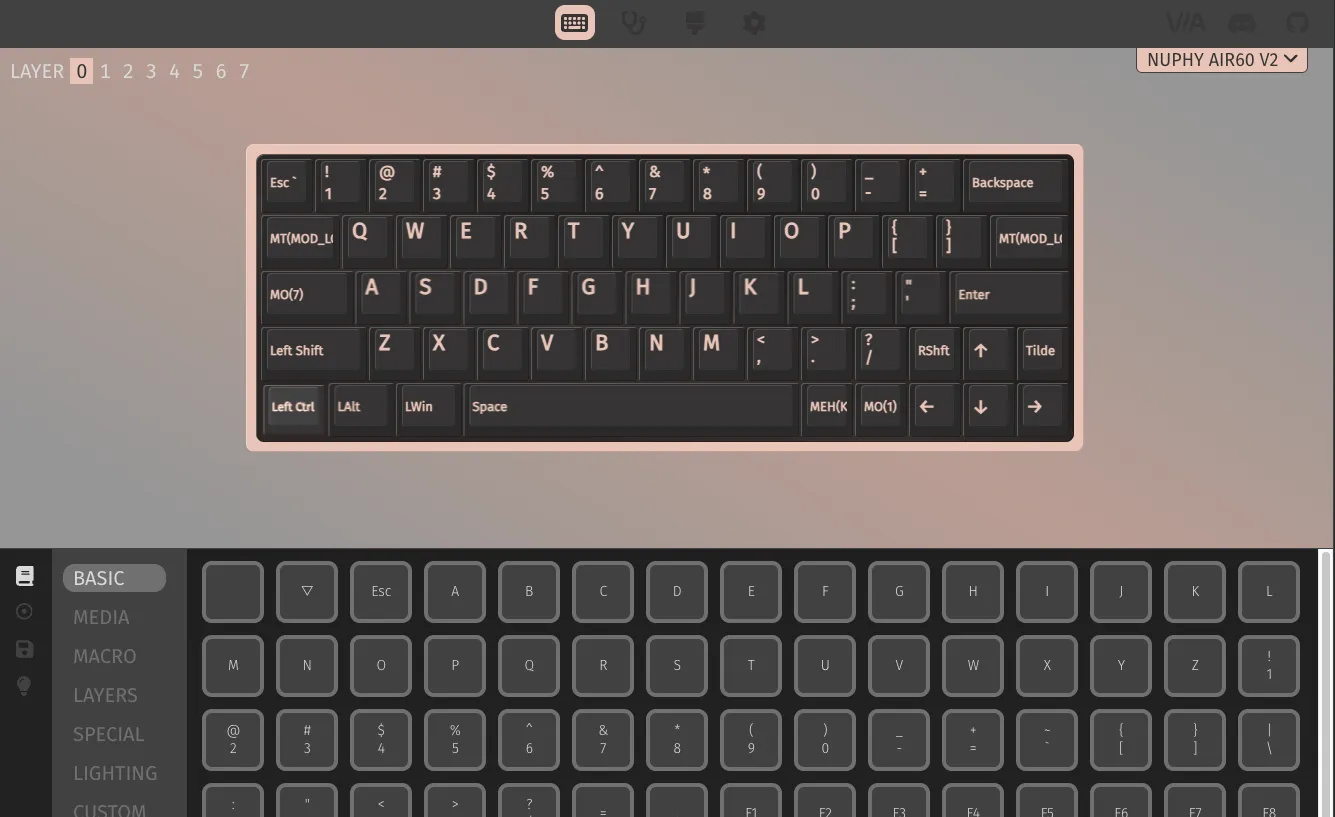
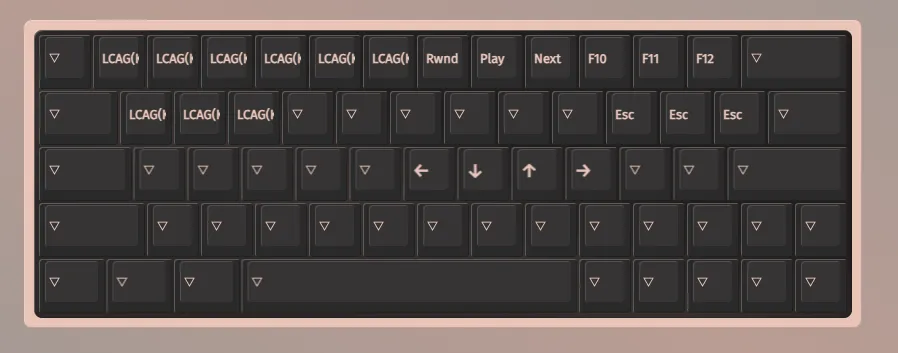
QMK is a game-changer! It's a must-have for any future keyboards of mine. I've never had this level of customisation with my keyboards before.
Nuphy provides a guide to getting started with VIA here. At the time of writing, Nuphy's code still needed to be merged into the main QMK firmware for VIA to auto-detect (due to a Bluetooth licence conflict). Nevertheless, Nuphy offers the Layout JSON here. One thing to note is that layers [0, 1] apply to Mac mode, and [2, 3] apply to Windows, with additional layers for RGB, etc.
In terms of wireless connectivity, the Nuphy has made a lasting impression! This is my first venture into wireless keyboards, but this board boasts versatile wireless functionality, supporting both 2.4GHz and Bluetooth. The 2.4GHz wireless feature operates at 1000Hz, ensuring lightning-fast response times – great for my late-night CS games.
Equipped with three Bluetooth channels – [Q], [W], and [E], easily accessible via the Fn key, this keyboard makes switching between devices a breeze. Whether I'm bouncing between laptops or my tablet, the transition is seamless. Both the 2.4GHz and Bluetooth connections have proven flawless for me. While there's a slight delay upon waking up, it's minimal and hardly noticeable. During regular operation, it's been nothing but plain sailing.
If you want wired, the Air60 has you covered, with USB-C. This added flexibility ensures that, regardless of preference, the keyboard is more than ready.
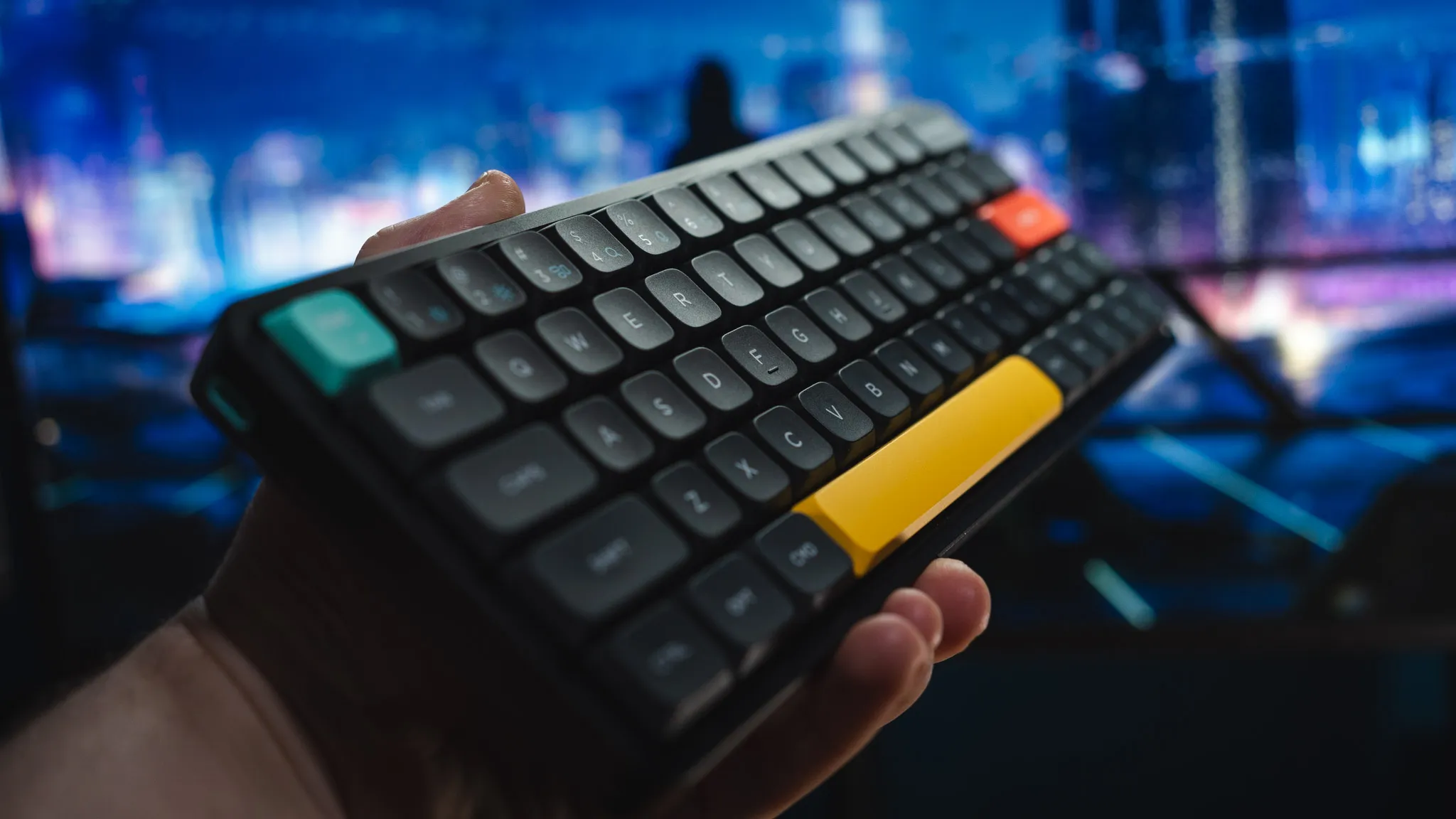
In terms of battery life, the Nuphy Air60 has proven to be exceptionally reliable. While the manufacturer boasts a claim of 150 hours without RGB lighting, I have yet to thoroughly test this specific duration. Throughout a month of rigorous testing, the need for a recharge has been minimal, albeit with the occasional cable use for QMK settings. Although I can't provide the exact number of hours due to sporadic cable connections, the overall battery performance of the Nuphy Air60 has been stellar in my experience 👌. For users like me who value longevity over flashy RGB lighting, this wireless mechanical keyboard proves to be a reliable companion. It consistently delivers without the frequent interruptions of charging, making it a dependable choice.
Talking RGB on the Nuphy Air60 – it's alright, not stellar. The default keycaps don't let the RGB shine through, and the lighting isn't as vivid as some other boards I've used. If you're all about that vibrant RGB life, this might not be your top pick. But, if like me, you're more into the keyboard's performance and reliability than flashy lights, the Air60 still holds its ground. It might not have the most dazzling RGB, but it's a solid choice for those who value function over extravagant lighting effects.
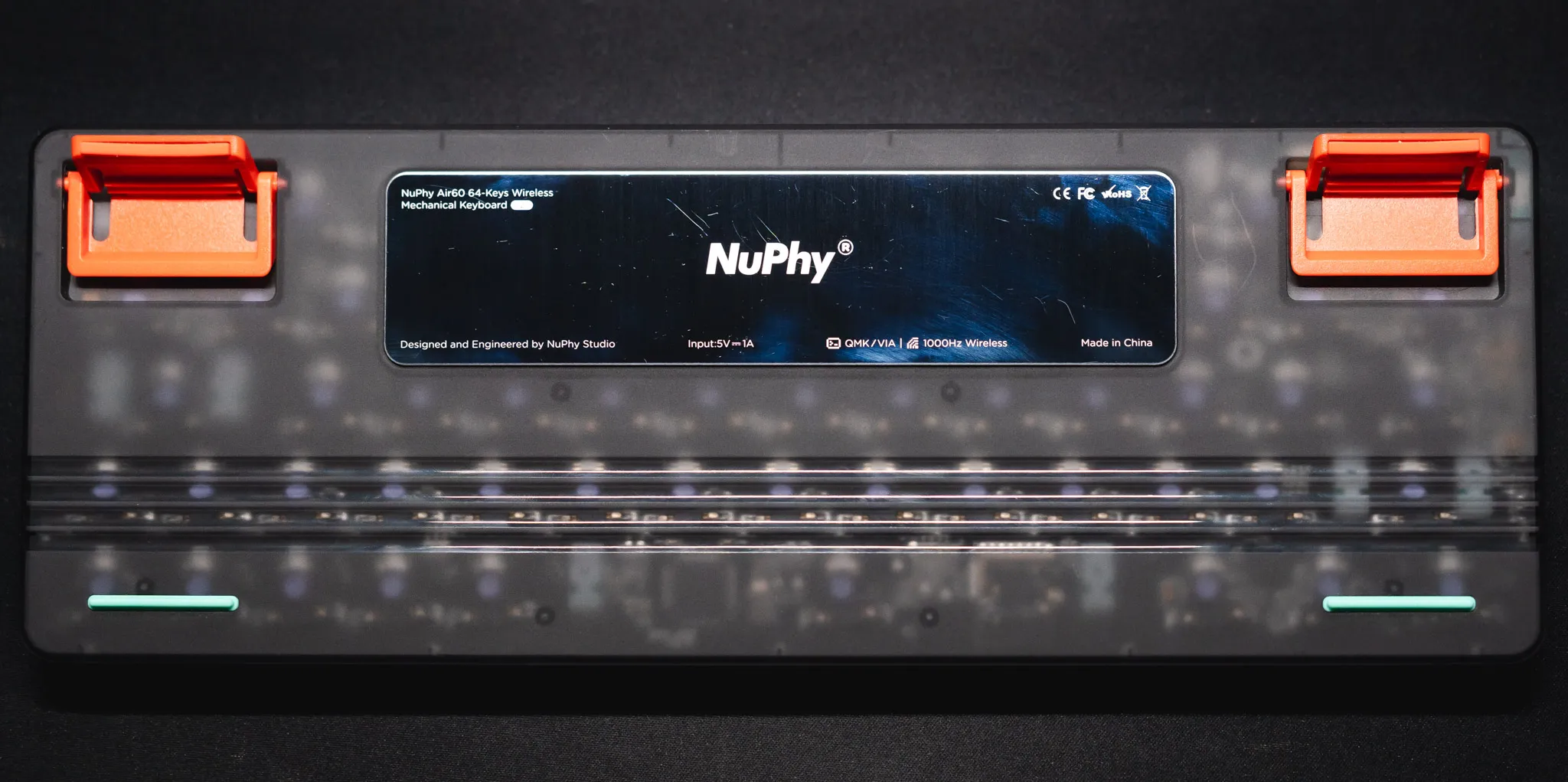
Let's talk about feet. The Air60 comes equipped with two-position foldable feet, touted as an improvement over the magnetic ones on the v1. However, despite the better design, this has become my biggest gripe. Not due to the positioning – the board feels comfortable, even without a wrist rest. The real issue arises from the rubber bottoms, intended to allow the board to sit on top of a laptop keyboard. Whenever you try to move the board backward, the feet almost fold closed on themselves. It's quite annoying, and the board doesn't glide easily, making it a bit of a hassle when you want to reposition it.
Typing experience
Now, I'm not a mechanical keyboard expert, having mostly used Cherry MX Reds/Browns on standard height keycaps. This time opting for Nuphy's own Wisteria switches (somewhat akin to Gateron low-profile browns), this marks my first foray into low-profile territory. The switches come prelubed, and there's also the option for Gateron switches (also prelubed).
The Wisteria switches on the Nuphy Air60 exhibit similarities with Gateron Browns (which I have on the Keycron), although, in my experience, they provide a more tactile and satisfying feel. Being my initial venture into low-profile mechanical keyboards, the typing experience is unique—reminiscent of typing on the MacBook M1 Pro keyboard in terms of low-profile design but with significantly improved feedback and tactility. The low-profile keys are perfectly spaced for me, allowing seamless gliding between them.
The sound damping on this board is commendable. It's relatively quiet, and there's noticeable support. The stabilisers, impressive for a low-profile design, can even be removed if you fancy modding or changing them.
Overall, typing on this keyboard has been a joy. I find myself averaging around 100 words per minute, a step up from my Ducky. The combination of the unique Wisteria switches, low-profile design, and sound damping makes for an enjoyable and efficient typing experience.
Final thoughts
In wrapping up my experience with the Air60, it's clear Nuphy has done an excellent job with this keyboard. The two-position foldable feet, despite my initial gripe, don't overshadow the overall comfort of the board. The typing experience on low-profile keys has been great, and I'm not too sure I want to go back.
The RGB isn't the most dazzling, but for users like me who prioritise function over flashy lighting, it's a minor compromise. The battery life has proven reliable, requiring minimal recharging during a month of use.
The wireless connectivity has been stable and reliable for me.
For those seeking a departure from the norm, the Nuphy Air60 v2 stands out as a reliable and enjoyable wireless mechanical keyboard. Whether you're a seasoned mechanical keyboard enthusiast or diving into the wireless world for the first time, the Air60 v2 brings a distinctive blend of comfort, performance, and versatility from a prebuilt board.
Pros
- Solid build
- Low-profile design
- Hot-swappable switches
- QMK/VIA firmware support
- 2.4GHz 1000Hz wireless
- Battery life is reliable
Cons
- 60% learning curve
- Weaker RGB compared to other boards
- Rubber bottom on the feet impede smooth keyboard movement